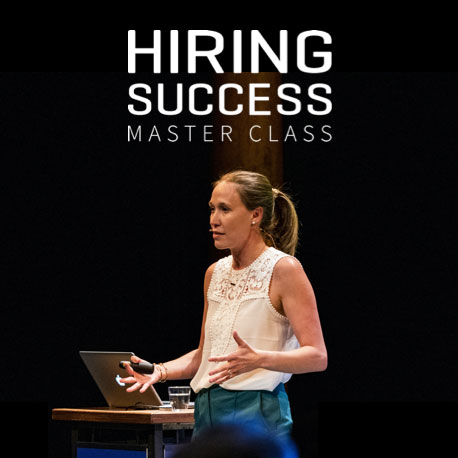
TA industry insider, Jonathan F. Kestenbaum shares his vision for quality high-volume hiring.
Article Highlights
- Strategy 1: Keep Your Standards High
- Strategy 2: Define Your Ideal Candidate
- Strategy 3: Refine Your Employer Brand
- Strategy 4: Engage your existing Talent Pool
- Strategy 5: Create a Seamless Application Process
High-volume recruiting is a challenge, no matter what experience you have. The best tips and tricks are always changing with new tech stacks and a fluctuating economy. You need to sift through virtual piles of applications and narrow down high-quality candidates quickly, but high-volume hiring doesn’t leave room for mistakes. As a quick benchmark, an average job posting attracts less than 50 applicants, while a high-volume job posting attracts over 250 applicants.
Staffing firms that attract qualified candidates by searching through job listings, looking through hundreds of resumes, and scheduling screening calls are overwhelmed with the labor, cost, and time it takes to get the job done. No matter how tumultuous the economy can be or how many hires you need to bring in, organizations can achieve Hiring Success through high-volume recruiting with the right investment in key strategies and capabilities.
Strategy 1: Keep Your Standards High
You don’t need to sacrifice quality when hiring in high-volume. An optimized recruitment process consisting of online assessments and pointed interview questions will help identify strong fit candidates faster and thin out the poor fits from the herd. Forget the age-old questions that everyone dreads like “tell me about yourself” or “what is your greatest weakness.” Instead, ask questions that will truly tell you about their character.
- What was your most significant achievement in your previous role and why?
- What would your previous coworkers say about you?
- In five minutes, could you explain something to me that is complicated but you know well?

The right online assessments can point you in the right direction of strong fit candidates for the job. and these assessments available continue to improve. Artificial intelligence enables the creators to apply perfected assessment science to create more candidate-friendly delivery mediums, like gamification. After these assessments, the actual interview will help you keep an eye out for transferable (often soft) skills. In most cases, you don’t need to rule out a candidate because they don’t have hard skills that could be taught on-site. In other words, you don’t have to worry about increased volume negatively impacting your Net Hiring Score.
Strategy 2: Define Your Ideal Candidate
A key surge recruiting strategy is a clearly defined image of the ideal candidate you’re looking for en masse. Attracting large amounts of candidates is the overall goal, but that means very little if you’re not hiring the right candidates. Staffing firms need to appropriately segment their talent needs and vet every resume accordingly. This needs to be understood by everyone involved in the hiring process. Sit down with them, spitball must-haves, including years of experience, soft skills, technical skills, location, and traits that would match your culture fit. Working these specifics into your job listing will save time from the beginning.
Having a targeted candidate persona enables you to implement an efficient process for screening large amounts of applications, even as remote hiring becomes the new normal. This strategy can help ensure only those that closely match this persona move on to the next round of your interview process. In turn, your time and your candidates’ time isn’t wasted, and your interview process can be targeted even though the entirety of the process is virtual. If you’re looking for a strategic approach to segmenting you talent, the Talent-Scarcity Impact Framework provides one such opportunity
Strategy 3: Refine Your Employer Brand
Focusing on your employer brand may be your last priority when you need candidates fast (and a large amount at that). The reality is, without an enticing employer brand, you will struggle to find top-notch candidates no matter how many you’re planning to hire. In fact, almost 50% of workers said they wouldn’t work for a company with a bad reputation. Therefore, it’s essential to showcase your organization’s values, mission, and culture—through a well-maintained blog or social media accounts, for example—and give candidates a reason to work for you

Look at your entire process, from start to finish, from a candidate perspective. If they come across two similar positions (same responsibilities, pay, and benefits) but one company touts their values, culture, and maybe even employee interviews — they are more apt to apply for that company’s open position.
Gather what your team knows to be true about the company’s values, and interview employees, either directly or anonymously, to get their perspective. What traits are needed to be successful at the organization? What do they notice about the team members that ‘walk the walk’ of the business? Make this clear within your job listings.
Strategy 4: Engage your existing Talent Pool
If high-volume hiring is something your organization is used to, you likely have a database of past candidates in your CRM or ATS. These are candidates that were interested in the company that, for one reason or another, weren’t the right fit for the role they applied for. Don’t lose touch with them. It’s essential to nurture these candidates with newsletters, monthly emails with open positions, and personal emails. After all, if they were denied due to lack of experience or a specific skill, they likely have been in the field building the needed experience in the meantime.
CRMs can be an effective tool to not only recruit at scale, but also strengthen your employer brand and improve applicant conversions, all while reducing your reliance on paid job boards. Building an effective CRM strategy will help bring your recruiting capabilities to the 21st century. To learn more about how you can do so, check out this Master Class lesson on HiringSuccess.com
Strategy 5: Create a Seamless Application Process

Is your application process driving away potential new hires? The average job application completion rate compared to those who start and abandon applications is around 10% on desktop and 5% on smartphones. Consider all of the abandoned applications that could have been your targeted candidate—turned away by a lengthy, redundant process.
There’s no need to request a resume only to push the candidate to input all of their skills and work history manually. Qualified candidates have seen this before and will quickly realize that the process is not worth their time, and it makes your company look outdated and unorganized.
Make your process seamless for all parties:
- It needs to be mobile-friendly. At least 58% of Glassdoor users are looking for jobs on their phones.
- Eliminate unnecessary login screens. Do candidates really need to create a dedicated account to apply?
- Make it short and sweet. For most positions, a resume, cover letter, and a portfolio link are all that’s needed for initial screening. More information, like references, can always be requested at the next stage.
Lastly, there’s a lot of moving parts with high-volume recruiting, and you need to be equipped with the right tech stack to keep your team organized and your candidate pipeline happy. You absolutely need an ATS to track data as a system of record along with a CRM that both tracks and facilitates behavior — and they need to work well together. Take a look at the Talent Tech Labs’ Digital Ecosystem 8.0 to build your staffing tech stack for surge hiring.

 Enroll in the Master Class & earn 6 SHRM credits
Enroll in the Master Class & earn 6 SHRM credits